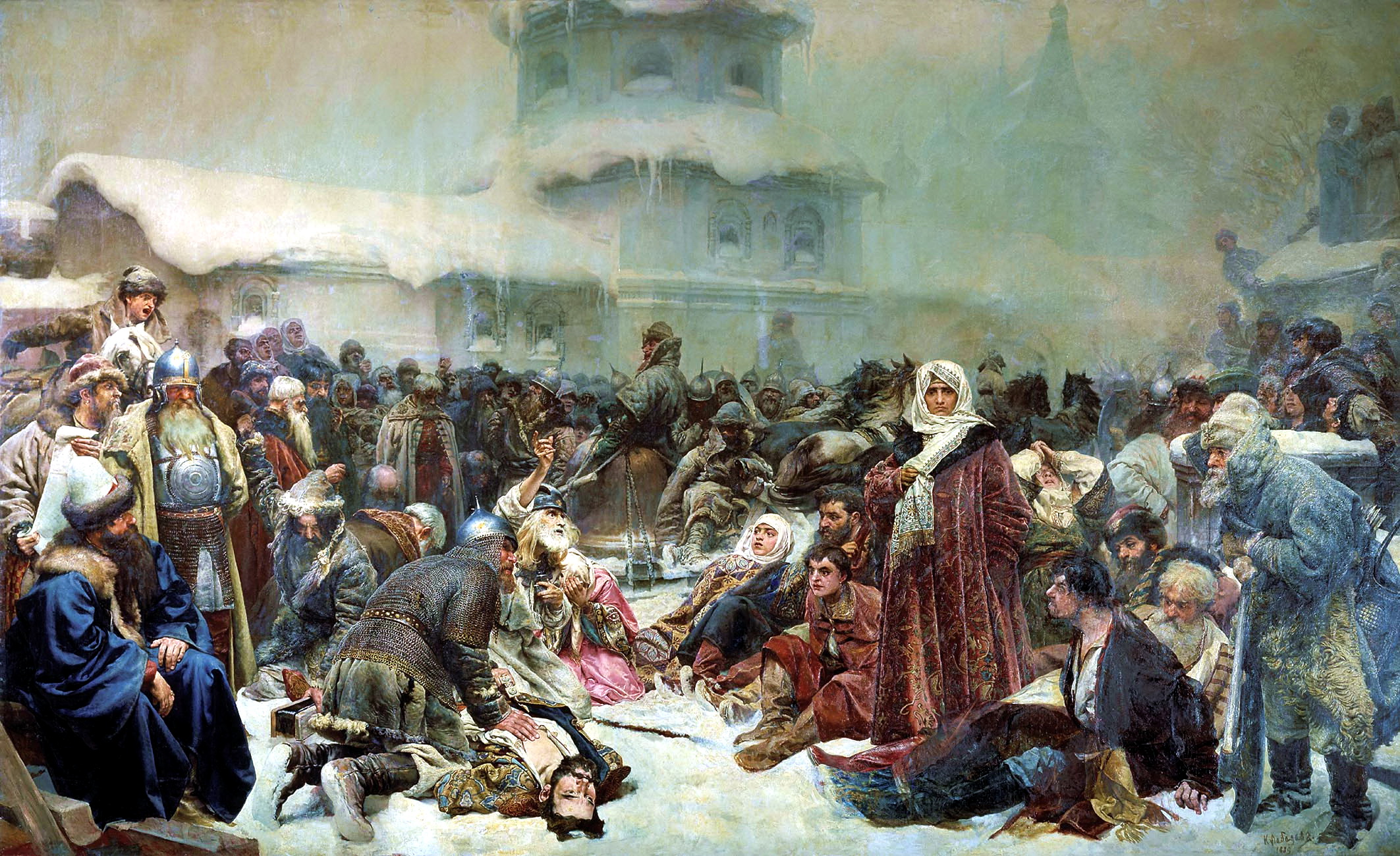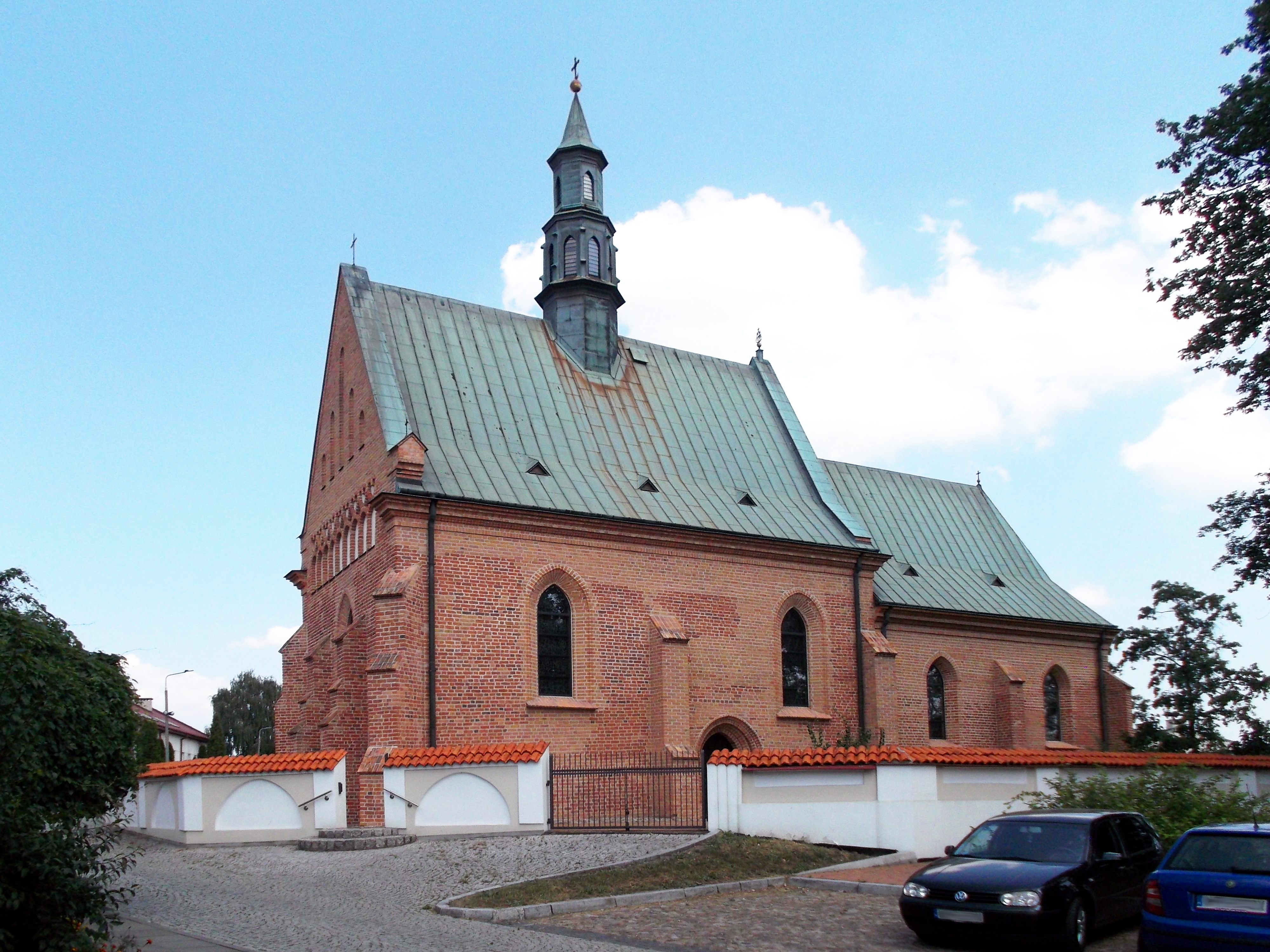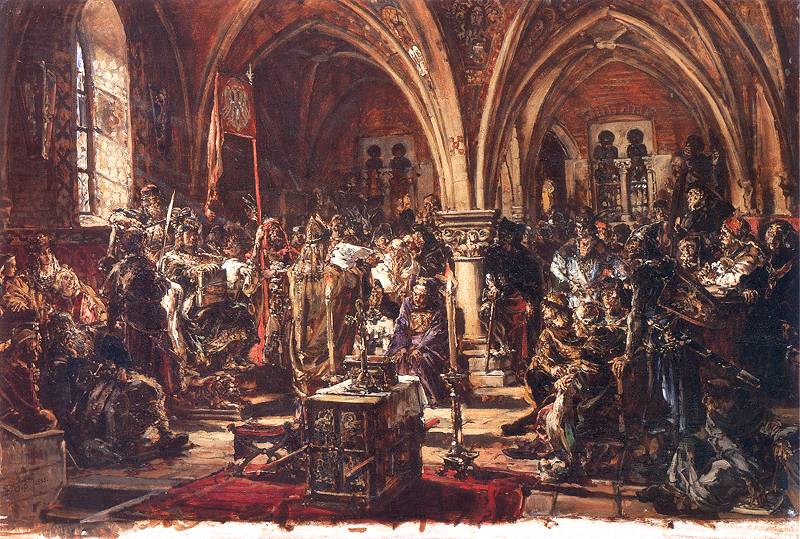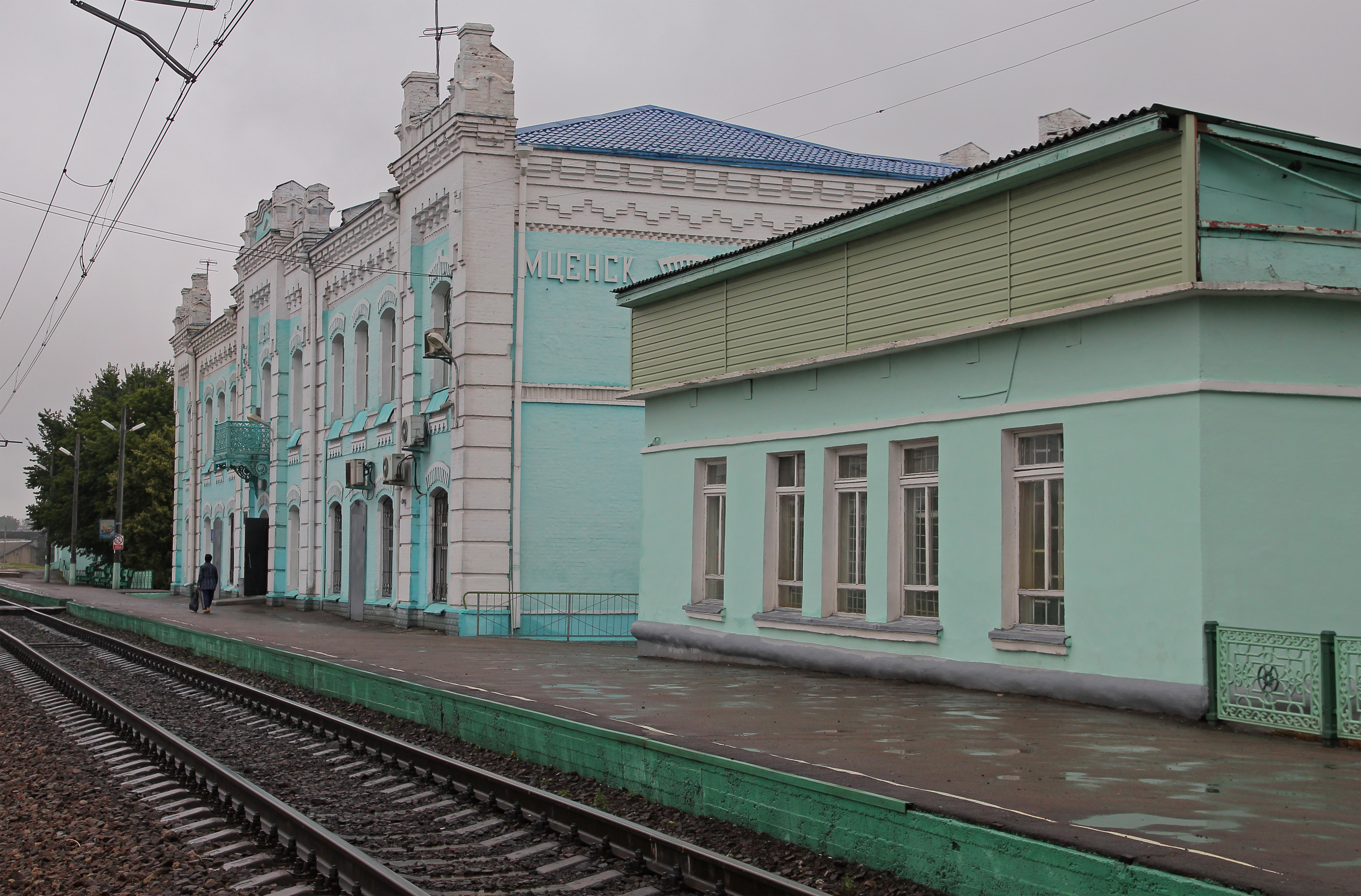|
Stanisław Kiszka
Stanisław Piotrowicz Kiszka (; died in 1513 or 1514) was a noble, diplomat and military commander from the Grand Duchy of Lithuania. He became the progenitor of the prominent Kiszka family. He was sent on frequent diplomatic missions to the Grand Duchy of Moscow and Kingdom of Poland. He attempted to negotiate peace during the Muscovite–Lithuanian Wars and supported a closer union between Poland and Lithuania. During the Second Muscovite–Lithuanian War (1500–03), he successfully defended Smolensk and became Grand Hetman of Lithuania (commander of the army) until Konstanty Ostrogski escaped Russian captivity in 1507. Kiszka helped to subdue the Glinski rebellion in 1508. Shortly before his death, Kiszka also became Grand Marshal of Lithuania. Biography Kiszka's father Piotr Strumiłło died in 1486 and he inherited his positions. Kiszka started his political career as a stolnik (royal pantler) and starosta of Lida in 1488. His further career was related to the favor of Ale ... [...More Info...] [...Related Items...] OR: [Wikipedia] [Google] [Baidu] |
Kiszka Family
The Kiszka family (plural Kiszkowie, ) was a noble family (szlachta) and one of the most powerful families (magnates) of the Grand Duchy of Lithuania in the Polish–Lithuanian Commonwealth. Originating from Mazovia, the family used the Coat of arms of Dąbrowa, Dąbrowa Coat of Arms. History In the 15th century the family moved from Mazovia to Grand Duchy of Lithuania. It reached magnate status in the 16th century. The family continued for five generations and had 29 members. The family had numerous possessions, most of them in Podlasie, Vilnius Voivodeship, Polesie and Volhynia. Family tree Incomplete family tree is presented below: References External links * https://web.archive.org/web/20130921183324/http://mariusz.eu.pn/genealogia/rody/kiszkowie01.html Kiszka family, {{Poland-noble-stub ... [...More Info...] [...Related Items...] OR: [Wikipedia] [Google] [Baidu] |
Ivan III Of Russia
Ivan III Vasilyevich (; 22 January 1440 – 27 October 1505), also known as Ivan the Great, was Grand Prince of Moscow and Sovereign of all Russia, all Russia from 1462 until his death in 1505. Ivan served as the co-ruler and regent for his blind father Vasily II before he officially ascended the throne. He multiplied the territory of his state through conquest, purchase, inheritance and the seizure of lands from his dynastic relatives, and laid the foundations of the centralized Russian state. He also renovated the Kremlin, Moscow Kremlin and introduced a new Sudebnik of 1497, legal code. Ivan is credited with ending the dominance of the Tatars over Russia; his Great Stand on the Ugra River, victory over the Great Horde in 1480 formally restored its independence. Ivan began using the title tsar, and used the title tentatively until the House of Habsburg, Habsburgs recognized it. While officially using "tsar" in his correspondence with other monarchs, he was satisfied with the ... [...More Info...] [...Related Items...] OR: [Wikipedia] [Google] [Baidu] |
Sigismund I The Old
Sigismund I the Old (, ; 1 January 1467 – 1 April 1548) was List of Polish monarchs, King of Poland and Grand Duke of Lithuania from 1506 until his death in 1548. Sigismund I was a member of the Jagiellonian dynasty, the son of Casimir IV of Poland, Casimir IV and younger brother of Kings John I Albert and Alexander I Jagiellon. He was nicknamed "the Old" in later historiography to distinguish him from his son and successor, Sigismund II Augustus. Before ascending to the Polish and Lithuanian thrones, he was Duke of Głogów from 1499, Duke of Opava from 1501, and governor of Silesia from 1504 on behalf of his brother, King Vladislaus II of Hungary, Vladislaus II of Bohemia and Hungary. Sigismund was born in the town of Kozienice in 1467 as the fifth son of Casimir IV and his wife Elizabeth of Austria (1436–1505), Elizabeth of Austria. He was one of thirteen children and was not expected to assume the throne after his father. Sigismund's eldest brother and rightful heir Vladi ... [...More Info...] [...Related Items...] OR: [Wikipedia] [Google] [Baidu] |
Lublin
Lublin is List of cities and towns in Poland, the ninth-largest city in Poland and the second-largest city of historical Lesser Poland. It is the capital and the centre of Lublin Voivodeship with a population of 336,339 (December 2021). Lublin is the largest Polish city east of the Vistula River, located southeast of Warsaw. One of the events that greatly contributed to the city's development was the Union of Krewo, Polish–Lithuanian Union of Krewo in 1385. Lublin thrived as a centre of trade and commerce due to its strategic location on the route between Vilnius and Kraków; the inhabitants had the privilege of free trade in the Grand Duchy of Lithuania. The Lublin Sejm, Parliament session of 1569 led to the creation of a Union of Lublin, real union between the Crown of the Kingdom of Poland and the Grand Duchy of Lithuania, thus creating the Polish–Lithuanian Commonwealth. Lublin witnessed the early stages of the Reformation in the 16th century. A Calvinist congregation wa ... [...More Info...] [...Related Items...] OR: [Wikipedia] [Google] [Baidu] |
Radom
Radom is a city in east-central Poland, located approximately south of the capital, Warsaw. It is situated on the Mleczna River in the Masovian Voivodeship. Radom is the fifteenth-largest city in Poland and the second-largest in its province with a population of 196,918 (30.06.2023) Radom was a significant center of administration, having served as seat of the Polish Crown Council which ratified the Pact of Vilnius and Radom between Lithuania and Poland in 1401. The Nihil novi and Łaski's Statute were adopted by the Sejm at Radom's Royal Castle in 1505. In 1976, it was a center of the June 1976 protests. Despite being part of the Masovian Voivodeship, the city historically belongs to Lesser Poland. The city is home to the biennial Radom Air Show, the largest air show in the country, held during the last weekend of August. "Radom" is also the popular unofficial name for a semiautomatic FB Vis pistol, which was produced from 1935 to 1944 by Radom's Łucznik Arms Factory. ... [...More Info...] [...Related Items...] OR: [Wikipedia] [Google] [Baidu] |
Battle Of Vedrosha
The Battle of heVedrosha (; ) was fought near the Vedrosha river, close to Dorogobuzh (then in the Grand Duchy of Lithuania, now in Russia) on 14 July 1500, during the Second Muscovite–Lithuanian War (1500–1503). In the battle of Vedrosha, Muscovite forces defeated outnumbered Lithuanian troops attacking them. The Battle of Vedrosha was the first major Muscovite victory over Lithuania in the war of 1500–1503. The Lithuanian geopolitical situation after the battle was desperate. Alexander of Lithuania unsuccessfully tried to even make the Crimean Khanate under Meñli I Giray and Moldavia under Stephen III begin hostilities against Muscovy, with which they were allied. The only help the Lithuanians received was the Livonian Order's attack on Pskov, which failed due to dysentery. The battle is mentioned in several Muscovite Chronicles, but these generally confuse details, for example, place names (e.g. Vyazma instead of Vedrosha) and the names of the military leaders. ... [...More Info...] [...Related Items...] OR: [Wikipedia] [Google] [Baidu] |
Union Of Mielnik
The Act of Mielnik or Union of Mielnik was an attempt to unite the Kingdom of Poland with the Grand Duchy of Lithuania in 1501. It was not ratified by the Lithuanian Seimas or by the Polish Sejm (see Łaski's Statute). The Act of Mielnik remained just a political project. Despite the failure to unify two countries into a single state, Poland and Lithuania were under a personal union until the Union of Lublin of 1569. Provisions After death of John I Albert, King of Poland, his brother Alexander Jagiellon, Grand Duke of Lithuania, became the most suitable candidate for the new king. Such a move would revive the Polish–Lithuanian union, a personal union between the two states. However, Alexander's ambitions went further. The Act of Mielnik was drafted by Polish and Lithuanian diplomats on 3 October 1501 in Piotrków and confirmed on 23 October 1501 by Alexander (who was already elected as the Polish King but not yet crowned) and few members of the Lithuanian Council of Lords. O ... [...More Info...] [...Related Items...] OR: [Wikipedia] [Google] [Baidu] |
John I Albert
John I Albert (; 27 December 1459 – 17 June 1501) was King of Poland Poland was ruled at various times either by dukes and princes (10th to 14th centuries) or by kings (11th to 18th centuries). During the latter period, a tradition of Royal elections in Poland, free election of monarchs made it a uniquely electab ... from 1492 to his death and Duke of Głogów from 1491 to 1498. He was the fourth Polish sovereign from the Jagiellonian dynasty and the son of Casimir IV Jagiellon, Casimir IV and Elizabeth of Austria (1436–1505), Elizabeth of Austria. Related to the House of Habsburg, John Albert was groomed to become emperor in the Holy Roman Empire, a plan that ultimately failed. He was well-educated and tutored by scholars such as Johannes Longinus and Filippo Buonaccorsi, Callimachus, whom he had subsequently befriended. Heavily influenced by the Italian Renaissance, John sought to strengthen royal authority at the expense of the Catholic Church and the clergy. In 1487 ... [...More Info...] [...Related Items...] OR: [Wikipedia] [Google] [Baidu] |
Sejm Of The Kingdom Of Poland
The General Sejm (, also translated as the General Parliament) was the parliament of the Kingdom of Poland (1385–1569), Kingdom of Poland. It had evolved from the earlier institution of ''Curia Regis'' (King's Council) and was one of the primary elements of democratic governance in the Polish dominion. Initially established in 1386, it officially functioned as a bicameral Diet (assembly), diet since the formation of the Senate of Poland, Senate in 1493. The Sejm was composed of members of the royal council or king's court (the royal court, who played the largest role), provincial crown offices such as castellans, voivodes and higher nobility or Magnates of Poland and Lithuania, magnates (the aristocratic element represented by the senate, upper house), members of the nobility who did not hold any crown offices and city council representatives (the democratic element represented by the lower house or chamber of deputies). These were the so-called three parliamentary states: the ... [...More Info...] [...Related Items...] OR: [Wikipedia] [Google] [Baidu] |
Mtsensk
Mtsensk () is a town in Oryol Oblast, Russia, located on the Zusha River (a tributary of the Oka) northeast of Oryol, the administrative center of the oblast. Population: 28,000 (1970). History It was first mentioned in the Nikon Chronicle in 1146 as a part of the Principality of Chernigov. The name comes from the Mtsena River, a tributary of the Zusha, beside which the fortress stood. In 1238, Mtsensk was destroyed by Batu Khan. Since 1320, it was under the rule of Lithuania, eventually becoming a part of the Muscovy in 1505. Since the beginning of the 19th century, Mtsensk was rapidly developing as an industrial town. During Operation Barbarossa, German armoured forces captured the town in the fall of 1941. In particular, troops of the 3rd Panzer Division, 4th Panzer Division, and Infantry Regiment Großdeutschland saw combat in the immediate vicinity. During the Battle of Kursk in 1943, Mtsensk served as the primary war zone. On 20 July 1943, Mtsensk was liberated ... [...More Info...] [...Related Items...] OR: [Wikipedia] [Google] [Baidu] |
Vilnius
Vilnius ( , ) is the capital of and List of cities in Lithuania#Cities, largest city in Lithuania and the List of cities in the Baltic states by population, most-populous city in the Baltic states. The city's estimated January 2025 population was 607,667, and the Vilnius urban area (which extends beyond the city limits) has an estimated population of 747,864. Vilnius is notable for the architecture of its Vilnius Old Town, Old Town, considered one of Europe's largest and best-preserved old towns. The city was declared a World Heritage Site, UNESCO World Heritage Site in 1994. The architectural style known as Vilnian Baroque is named after the city, which is farthest to the east among Baroque architecture, Baroque cities and the largest such city north of the Alps. The city was noted for its #Demographics, multicultural population during the Polish–Lithuanian Commonwealth, with contemporary sources comparing it to Babylon. Before World War II and The Holocaust in Lithuania, th ... [...More Info...] [...Related Items...] OR: [Wikipedia] [Google] [Baidu] |
Lithuanian Council Of Lords
The Lithuanian Council of Lords () was the main permanent institution of central government in the Grand Duchy of Lithuania active in its capital city of Vilnius. It had originated from the advisory Council of the Grand Duke, established by Vytautas the Great in the early 15th century. During the reign of Casimir Jagiellon it was renamed to the Council of Lords. Under the Union of Lublin of 1569, the Council formally became a constituent part of the Polish–Lithuanian Senates (see also Offices in the Polish-Lithuanian Commonwealth), together with the Royal Council of Poland, but it continued to operate ''de facto'' until the mid-17th century. Competence The Council carried out the functions of the Grand Duke after his death and had a supreme authority in the Grand Duchy of Lithuania until a new Grand Duke was appointed, as well as organised his appointment. The first appointed ruler was Casimir Jagiellon, who in exchange expanded the council's powers significantly and approved t ... [...More Info...] [...Related Items...] OR: [Wikipedia] [Google] [Baidu] |








